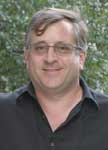The American Academy of Arts & Sciences Honors Two Former IRIS Board Members
Thorne Lay, Professor of Earth and Planetary Sciences at the University of California, Santa Cruz, and immediate past Chair of the IRIS Board of Directors, and Paul G. Richards, Mellon Professor of the Natural Sciences at Lamont-Doherty Earth Observatory of Columbia University, and a member of the IRIS Board of Directors, 1988-1990, were elected to the 2008 Class of Fellows of the American Academy of Arts & Sciences. Recognized as leaders in seismology, Lay and Richards are among 212 new members of the Academy and two of the nine fellows in the Astronomy and Earth Sciences section.

Lay is known for his contributions to our understanding of the structure of the Earth's interior, the physics of earthquakes, and mantle dynamics, and for the development of methods for verifying the Comprehensive Nuclear Test Ban Treaty. He also discovered that the core-mantle boundary and back-arc basin regions are laminated.

Richards studies seismic waves from earthquakes and nuclear weapon test explosions to explore the internal structure of the Earth, to quantify seismic hazard, and to demonstrate capabilities to monitor nuclear arms control treaties. He and Xiaodong Song discovered evidence in 1996 that the Earth's inner core is rotating faster than the Earth's surface.
Lay and Richards, along with the other new members, will be inducted at a ceremony on October 11, 2008, at the Academy's headquarters in Cambridge, Massachusetts.
The American Academy of Arts & Sciences is one of the nation's oldest and most prestigious honorary societies. Founded in 1780 by John Adams, James Bowdoin, John Hancock and other scholar-patriots, the American Academy is an independent policy research center that undertakes studies of complex and emerging problems. Current studies focus on science, technology and global security; social policy and American institutions; the humanities and culture; and education.


